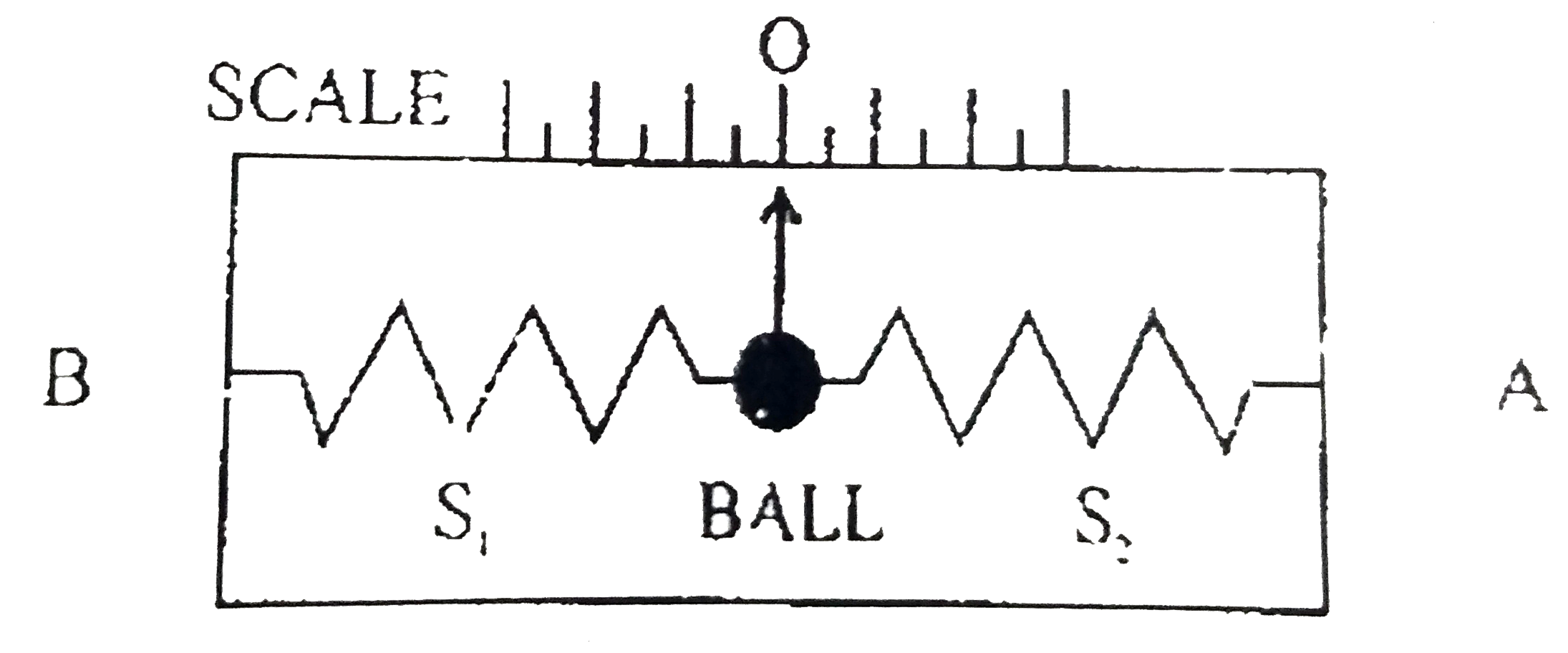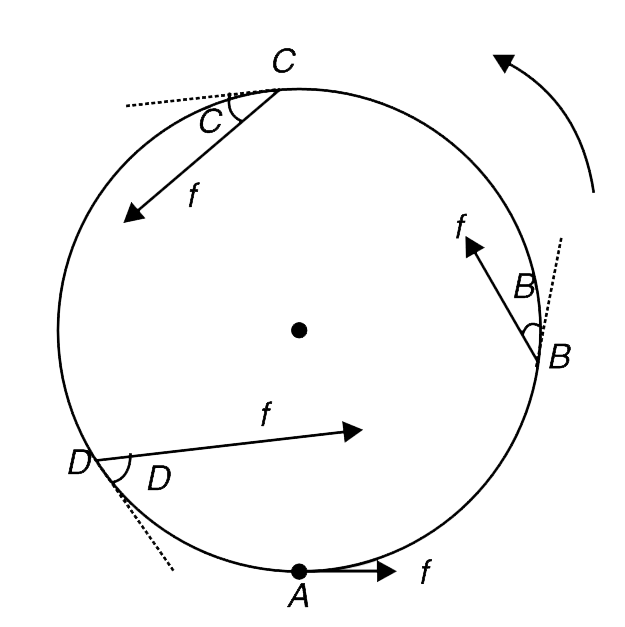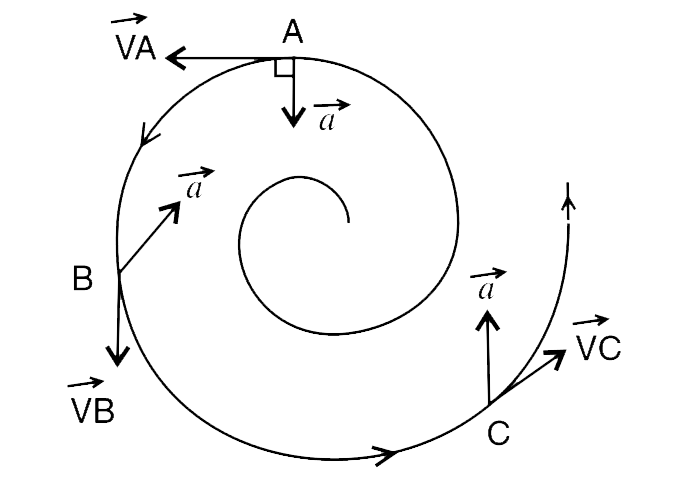Two bodies make an elastic head on colision on a smooth horizontal table kept in a car.Do you expect a change in the result if the car is accelerated on a horizontal road because of the noninertial character of the frame? Does the equation velocityof separation = velocity of approach remain valid in n accelerating car? Does the equation final momentum =initial momentum remain valid in the accelerating car?
Step by step video & image solution for Two bodies make an elastic head on colision on a smooth horizontal table kept in a car.Do you expect a change in the result if the car is accelerated on a horizontal road because of the noninertial character of the frame? Does the equation velocityof separation = velocity of approach remain valid in n accelerating car? Does the equation final momentum =initial momentum remain valid in the accelerating car? by Physics experts to help you in doubts & scoring excellent marks in Class 11 exams.
Updated on:21/07/2023Topper's Solved these Questions
- CENTRE OF MASS, LINEAR MOMENTUM, COLLISIONBOOK - HC VERMACHAPTER - CENTRE OF MASS, LINEAR MOMENTUM, COLLISIONEXERCISE - Objective 1
17 Videos
- CENTRE OF MASS, LINEAR MOMENTUM, COLLISIONBOOK - HC VERMACHAPTER - CENTRE OF MASS, LINEAR MOMENTUM, COLLISIONEXERCISE - Objective -1
1 Videos
- CENTRE OF MASS, LINEAR MOMENTUM, COLLISIONBOOK - HC VERMACHAPTER - CENTRE OF MASS, LINEAR MOMENTUM, COLLISIONEXERCISE - worked out Examples
23 Videos
- CALORIMETRYBOOK - HC VERMACHAPTER - CALORIMETRYEXERCISE - Exercises
18 Videos
- CIRCULAR MOTIONBOOK - HC VERMACHAPTER - CIRCULAR MOTIONEXERCISE - Exercises
30 Videos
Similar Questions
A collision experiment is done on a horizontal table kept in an elevator. Do you expect a change in the results if the elevator is accelerated up or down because of the noninertial character of the frame?
View SolutionA car weighing 1600 kg moving with a velocity of 30 m/s retards uniformly coming to rest in 20 seconds. Calculate the
(i) Initial and final momentum of the car.
(ii) Rate of change of momentum of the car.
(iii) Acceleration of the car.
View Solution
Knowledge Check
Two cars A and B of equal masses (100Kg) are moving on a straight horizontal road with same velocity 3m/s as shown. At t=0 car A starts accelerating with constant acceleration of 2m/s2 (intial separation between car is 25m). Choose correct options (neglect length of cars)
 Acar A catches car B at t=6 sec.Bmagnitude of displacment of car Bw.r.t car A is first 2 sec.Ccar A will catch car B at t=5 sec.Dmagnitude of displacement of car Bw.r.t. car A is 4m in first 2 sec
Acar A catches car B at t=6 sec.Bmagnitude of displacment of car Bw.r.t car A is first 2 sec.Ccar A will catch car B at t=5 sec.Dmagnitude of displacement of car Bw.r.t. car A is 4m in first 2 secThe device in figure is an acceleraometer which is fitted to a car. It consist of a spherical ball, mass 0.08 kg, attached to a pointer which can move horizontally against a fixed scale that gives the acceleration of the car, O indicates zero acceleration. On each side of the ball are attached identical springs, S1 and S2. that are fixed at their ends. The device is enclosed in a rigid transparent housing. The car accelerates towards A.

If the car starts from rest at time t=0 and travels along a straight road. The accelerometer readings are recorded in table.
Time//sAcceleration//ms^(2)0.00−3.0011.003.00−4.507.004.50−7.000.00
How far does the car travel in the first 7.00s?A57.38mB215.62mC166.12mD106.88mI have been planning to buy a new car and one of the major considerations for me is the fastest way to make a U turn on a horizontal road at constant speed. Suppose to make a 180∘ turn on a circular path. The car's steering system does not allow a radius of less than 5m. The road is wide enough to allow a circle of maximum radius of 20m. If the acceleration is greater than 5m/s2, the car skids.
What is coefficient of static friction between car tires and road?A5m/sB103m/sC10m/sD15m/s
A car weighing 1600 kg moving with a velocity of 30 m/s retards uniformly coming to rest in 2 seconds . Calculate the
(i) Initial and final momentum of the car
(ii) Rate of change of momentum of the car .
(iii) Acceleration of the car .
View SolutionA bob suspended from the ceiling of a car which is accelerating on a horizontal road. The bob stays t rest with respect to the car with the strig making an angle θ with the vertical.The linear momentuym of the bob as seen from the road is increasing with momentum? If not, where is the external force which changes the linear momentum?
View SolutionSTATEMENT-1 : Two bodies of mass M and 2M released from rest and they move towards each other due to their mutual gravitational force of attraction and collide at mid point.
STATEMENT-2 : If the total mechanical energy of a body is zero than its linear momentum is necessarily non zero at any point other than reference point.
STATEMENT-3 : The linear momentum of the bob of a simple pendulum suspended by the roof of a car accelerating on a horizontal road increases due to tension in the string of the pendulum.
View Solution(a) A car starts moving (at point A) on a horizontal circular track and moves in anticlockwise sense. The speed of the car is made to increase uniformly. The car slips just after point D. The figure shows the friction force (f) acting on the car at points A, B, C and D. The length of the arrow indicates the magnitude of the friction and it is given that ∠D>∠B>∠C. At which point (A, B, C or D) the friction forces represented is certainly wrong ?

(b) A particle is moving along an expanding spiral (shown in fig) such that the normal force on the particle [i.e., component of force perpendicular to the path of the particle] remains constant in magnitude. The possible direction of acceleration(→a)of the particle has been shown at three points A, B and C on its path. At which of these points the direction of acceleration has been represented correctly.

(c) A particle is moving in XY plane with a velocity . →v=4ˆi+2tˆjms−1 . Calculate its rate of change of speed and normal acceleration at t = 2 s.
View SolutionI have been planning to buy a new car and one of the major considerations for me is the fastest way to make a U turn on a horizontal road at constant speed. Suppose to make a 180∘ turn on a circular path. The car's steering system does not allow a radius of less than 5m. The road is wide enough to allow a circle of maximum radius of 20m. If the acceleration is greater than 5m/s2, the car skids.
What is coefficient of static friction between car tires and road?
View Solution
